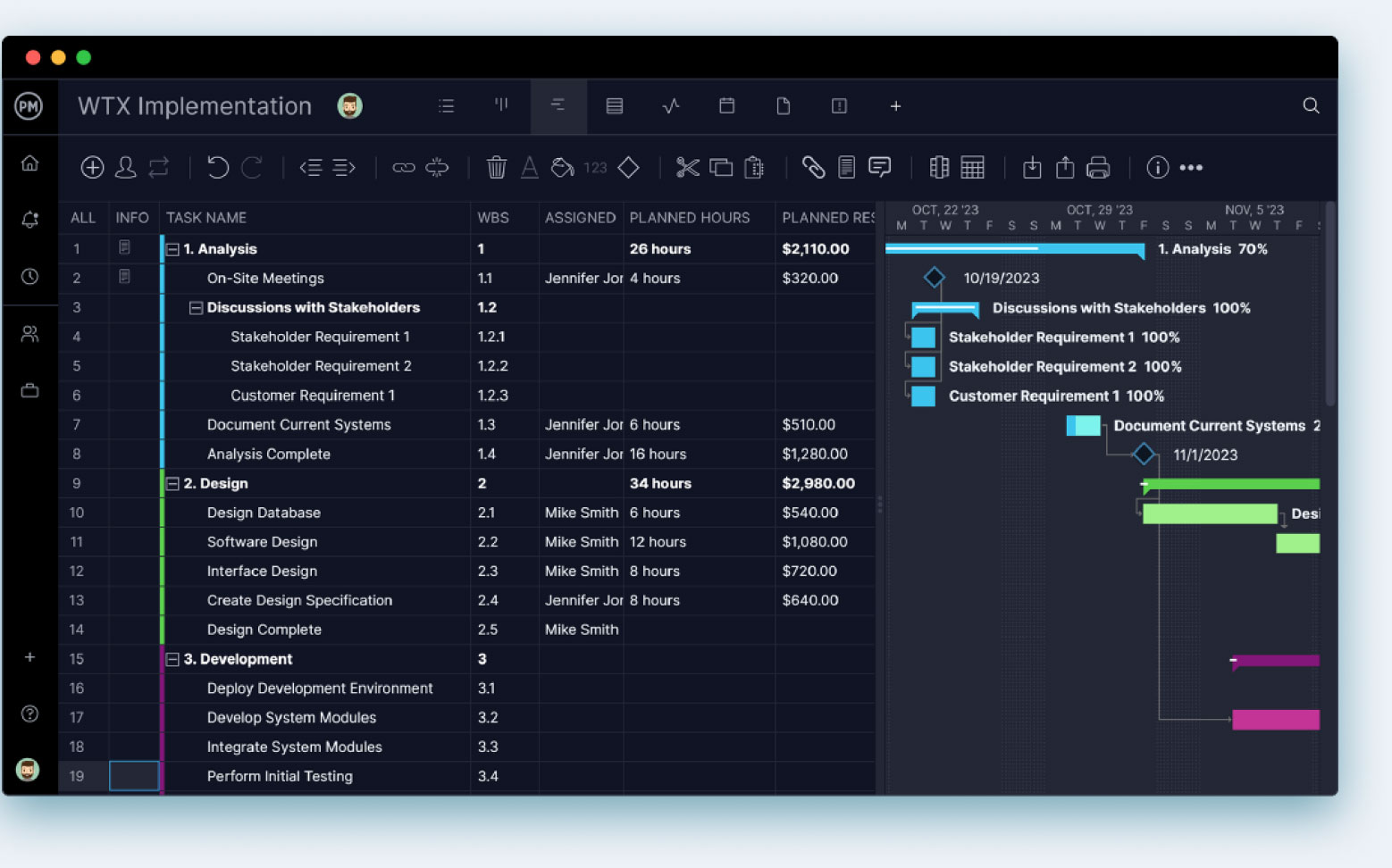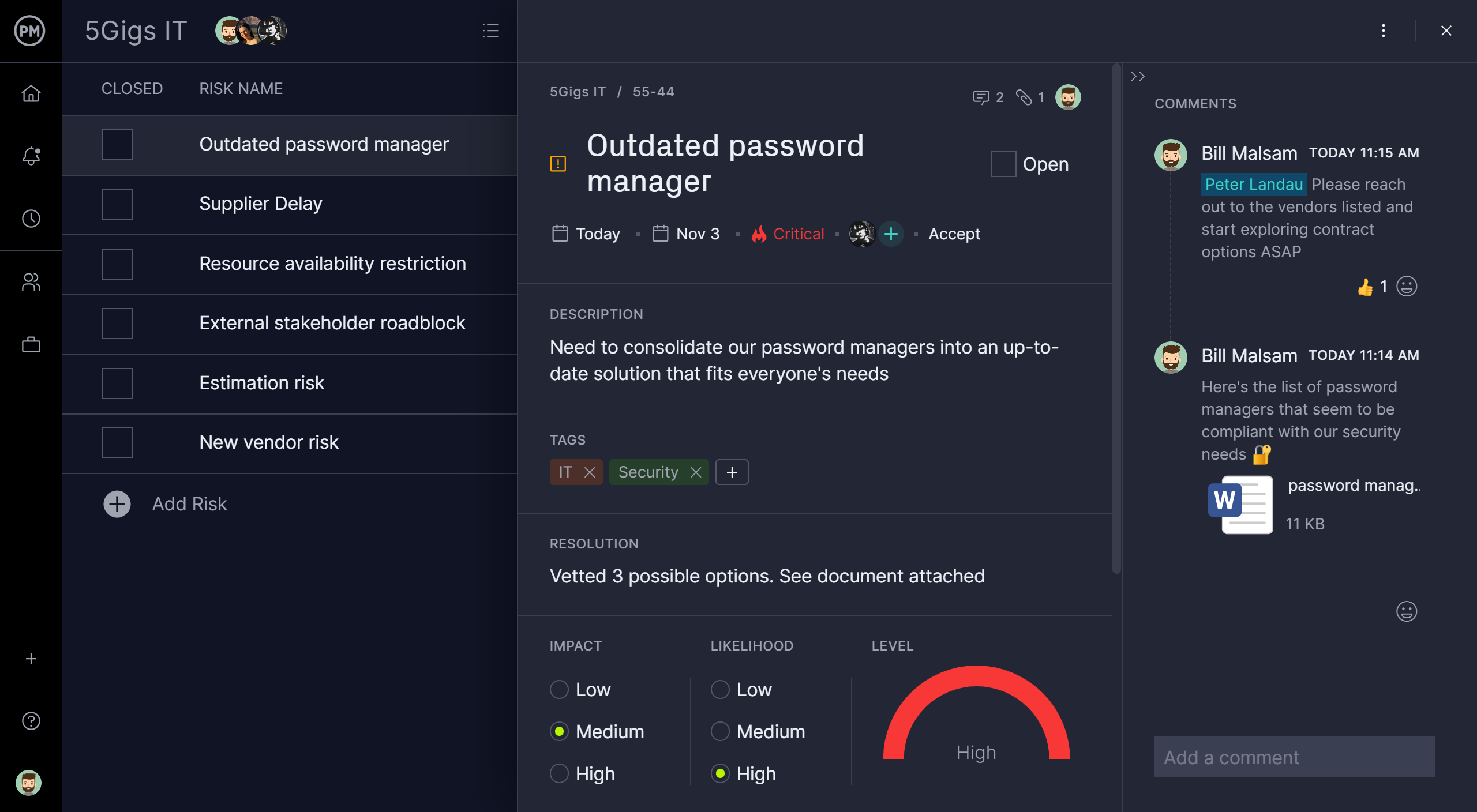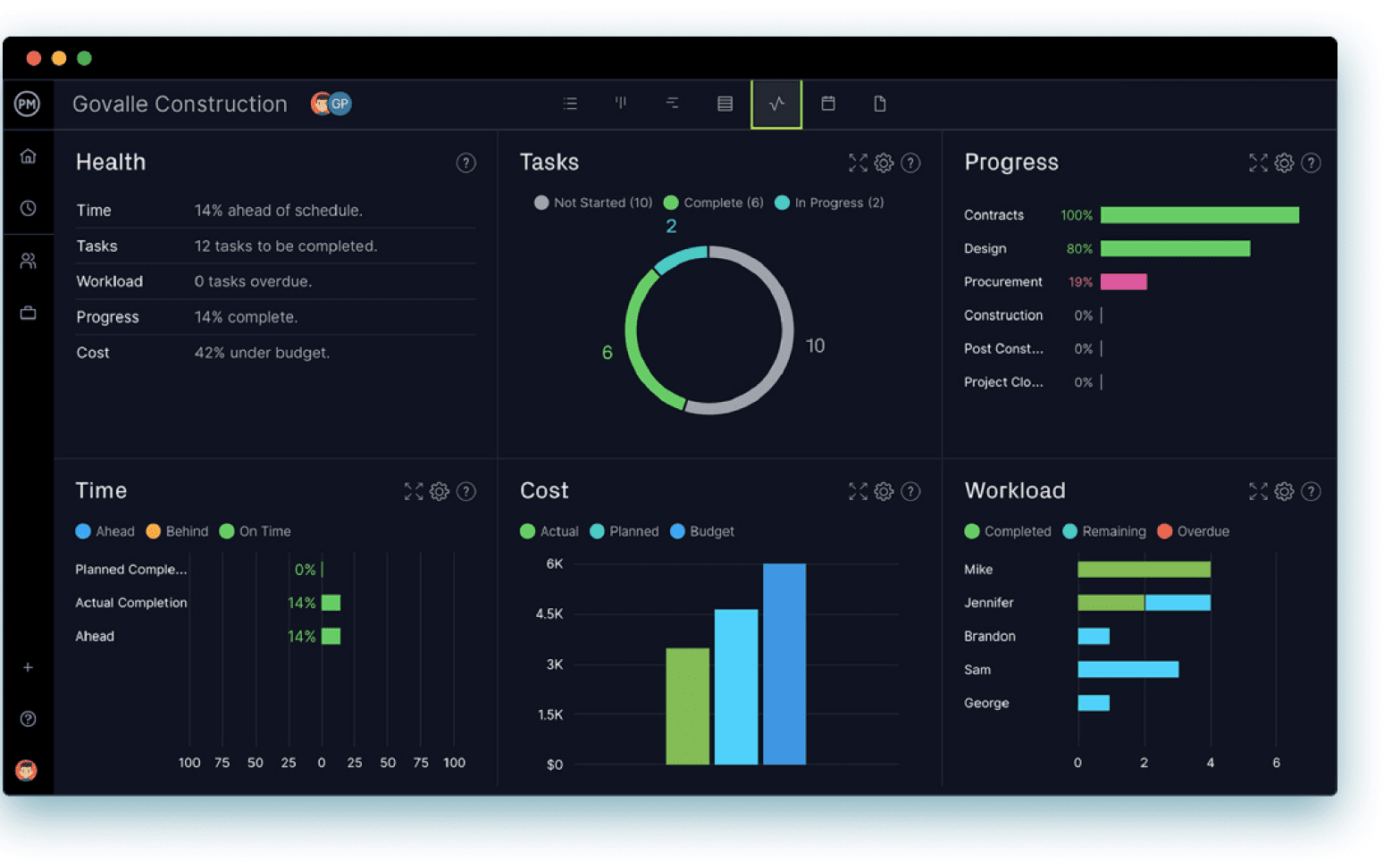Information technology (IT) runs most businesses. It’s hard to imagine a company without an IT department. But those devices don’t run for free. Managing information costs and managing information security for those costs are part of making an IT budget.
First, we need to understand what an IT budget is, how often they’re made and what is the best size for one. We’ll also discuss the importance of an IT budget, who’s involved in making one and what’s included so you don’t miss any crucial steps.
What Is an IT Budget?
An IT budget consists of all the IT spending for an organization over one year. That spending can come from a range of sources. Anywhere the organization incurs IT operations costs, though not limited to the IT organization, will be included in the IT budget.
This will include an accurate estimate of decentralized IT spending and shadow IT spending, the former being the distribution of functions, control and information, while the latter is IT-related hardware and software use without the knowledge of the IT department.
Some of the items that are included in an IT budget are hardware, software, personnel, outsourcing, disaster recovery and any occupancy costs associated with the support of the IT in the organization. Taxes, except value-added taxes, are also included.
Planning and managing these resource costs in an IT budget can be facilitated by project management software. ProjectManager is award-winning project management software that can plan, manage and track IT resources, both human and nonhuman, in real time. Use our robust Gantt charts to plan all your IT costs and view your planned costs against your actual costs as you move through the year by setting a baseline. This real-time data will then be available across our software features. Get started with ProjectManager today for free.

How Often Are IT Budgets Created?
As stated above, an IT budget is usually created once a year. This is a common budget cycle, though all budgets should be reviewed throughout the year. It’s never a good idea to create an IT budget and forget about it. Remember, the IT budget is the plan for the organization’s IT expenditures for the financial year. But those forecasts are estimates and to ensure that you keep to your IT budget, monitoring and tracking costs is imperative.
What Is the Ideal Size of an IT Budget?
The ideal size of an IT budget is relative and depends on many factors. There isn’t a definitive answer to that question. In general, you’ll find that banking and financial services spend the most on their IT budget, which is understandable as security and integrity are paramount issues for this sector. Media and entertainment are behind banks and financial institutions, followed by software publishing and internet services. Construction tends to have the smallest IT budgets and less complex IT management departments.
What Is the Importance of IT Budgeting?
The importance of having an IT budget is to align technology requirements with an organization’s business strategy. You can’t manage your IT finances without an IT budget. But these are relatively obvious reasons. Let’s explore some other reasons.
Ensure the Continuity of IT Operations
IT operations are all about the implementation, managing, delivering and support of IT services. This must align with the larger business needs of internal and external users. This important part of IT service delivery needs to be well funded as it’s a crucial part of the financial, telecommunications and retail industries, just to name a few.
Fund the Execution of Future IT Projects & IT Roadmap
Then there are the future IT projects, which will also require substantial investment. Using an IT roadmap, businesses can develop and share a strategic-level plan for future IT initiatives. Not only does this create a more strategic approach to IT costs and future investments, but it also helps to save money by identifying those tasks and systems that are costing the organization money. It also keeps the organization’s technology systems running smoothly by staying on top of mission-critical items.
Support the IT Asset Management Lifecycle
Then there’s the IT asset management lifecycle, which goes from request, fulfillment and deployment to monitoring, servicing and retiring. The IT budget creates a centralized, cost-effective way of procurement by identifying opportunities for consolidation. But IT budgets also fund the streamlined provisioning of this process through effective planning and optimizing utilization.
Establish a Cost Baseline to Control and Track IT Costs
The ability to track these costs is essential to keeping to your IT budget once it’s been created and approved. By creating a baseline, you capture the IT budget as planned. Then you can use this baseline to compare it to your actual spending at any time in the year. This allows you to see the difference, if any, between what you planned to spend and what you spent. If there’s a discrepancy between the two, you can work to reconcile it and stay on budget.
Who Is Involved In IT Budgeting?
Various people in an organization can be involved in IT budgeting. It depends on the organizational structure of the company. However, there tend to be a few professionals who are mostly involved in this process. They include the CIO (the chief information officer); they’re responsible for creating business value, approving invitations and establishing policies, strategies and standards.
Other IT professionals involved in IT budgeting include the CFO or chief financial officer, who is responsible for all financial decisions for an organization. There are also IT managers, IT directors and even the IT team who should be consulted. If the organization has a project management office (PMO), it’ll be part of the IT budget-making process, but even leaders in different departments who use IT should be part of the IT budget decision-making process.

What Is Included in an IT Budget?
There are many things to consider when creating an IT budget, but the first and most important is what is your priority. Before you put pen to paper, know what your business goals are for the year and prioritize each. It’s also helpful to look back at last year’s budget. Now, let’s look at what should be included in the IT budget.
- Staff and compensation: This includes the salaries of your staff, any contractors and whatever rewards you expect to provide, such as bonuses.
- Hardware: This includes costs such as laptops, servers, desktop computers, printers, telecommunications equipment, phones, phone systems, networking equipment and firewalls.
- Software: Any programs that you own or subscribe to.
- Infrastructure expenses: This includes the purchase price and the cost of using the infrastructure, maintenance and disposal when it’s retired.
- Cybersecurity expenses: This includes any items that are used to secure your network and data, such as an IT-managed service provider.
- IT audit costs: This includes external auditor costs and the costs needed to implement the suggested changes.
- Disaster recovery costs: There needs to be set aside funds for the organization to restore access and functionality to its IT infrastructure in case of a disaster, whether man-made or natural.
- IT asset requests: There needs to be funds set aside for employees who might submit requests so that an organization can buy new IT assets at any given time.
- IT asset maintenance expenses: This is any cost that is incurred by the organization to keep its assets in good working condition.
- IT project management costs: These are costs related to the execution of specific IT projects, as opposed to recurring costs that are required for the normal IT operations of an organization. While these costs should be reflected in the overall IT budget, IT projects should also have their project budget.
How to Make an IT Budget in 7 Steps
We’ve talked about the various items that need to be included in your IT budget. Now, it’s time to list the steps you should take to create that IT budget.
1. Define the IT Goals for Your Organization
The first step is to understand what the strategic goals are for the year. These IT goals, of course, must conform to the overall strategic goals of the organization. If the organization sees IT investment as a critical part of its strategy, then there might be more funding for it. If they’re trying to save money, then it might get less. Therefore, the IT manager has to figure out what’s needed in terms of IT operations and infrastructure as it aligns with the organization’s strategic goals.
2. Create an IT Roadmap
Whatever you define as your strategic goals in the prior step needs to be planned out on an IT roadmap. This high-level visual plan will help you communicate the organization’s IT strategy. The IT roadmap shows all your IT initiatives on a shared timeline, which makes it easier to determine the best way to share resources that benefit all the projects involved. The IT roadmap lays out current IT capabilities, projected IT needs and any improvements that will be executed over the coming year.
3. Identify the IT Costs for the Last Year
If you made a budget the year before it can prove a valuable tool for creating the new year’s budget. That’s because you can see what you needed over the last year and what those associated costs were. This provides an idea of what your costs will be for the coming year, though you’ll have to adjust for inflation and any other factors that could be impacting those costs. It also helps you understand what you need then and what you’ll likely need again.
4. Make an Inventory of Current IT Assets
Having an inventory of your current IT assets helps you identify, track and manage those assets. In doing so you’ll also have a better understanding of what you’ll need in terms of assets for the next year. Therefore, make sure you have a thorough list of all servers, laptops, mobile devices, printers, network devices, software licenses and other IT-related assets used by the organization.
5. Estimate the Costs of IT Projects for the Upcoming Year
With this information, you can now start to forecast what your potential costs will be for the coming year. But don’t forget any IT projects that are looming. They’ll bite into your budget and should be accounted for in the IT budget. Therefore, if you’re planning to purchase new devices, add servers or whatever other project is coming up, be sure to make accurate an estimate of what they’ll cost.
6. Create an IT Disaster Recovery Plan
You’ll also need to create a fund for any major issues that might occur over the year. This is part of your risk management plan, called a disaster recovery plan. It’s a set sum that you believe will cover any disasters, such as a weather-related outage or a man-made hack that compromises your infrastructure and data. It must be enough to get you back up and running quickly.
7. Determine Optimum IT Staffing Levels
We’ve discussed equipment, software and projects, but it’s important not to neglect your staff. They are the ones who will manage the IT and respond to any issues. Every organization has a different amount of necessary staff to man its IT department. This depends on what you’re tasked with and how much the organization will fund those staff members.
IT Budget Template
Creating an IT budget can be a daunting task. Using a template can help you make sure that nothing crucial has been overlooked. ProjectManager is more than an award-winning project management software, it’s the online hub for all things project management. We have dozens of free templates for every aspect of managing a project across numerous industries, including IT. Download our free IT budget template for Excel and get a head start on building an accurate IT budget.

Get your free
IT Budget Template
Use this free IT Budget Template for Excel to manage your projects better.
How ProjectManager Helps With IT Budgeting
Our free template can help get you started, but like all templates, it can only do so much. It’s a static document that has to be manually updated if you want to monitor cost variance. What you need is project management software. ProjectManager is cloud-based project management software with features to make budgets and track costs in real time. Create your budget on our powerful Gantt chart and, once you set a cost baseline, track your resource costs to make sure that you’re not going over your budget.
Monitor Costs and More on Real-Time Dashboards
Whenever you want to check on your costs, you can toggle over to our live dashboard. It automatically captures real-time data and displays it on easy-to-read graphs and charts. One of the metrics is cost, which shows the actual, planned and budgeted costs in a color-coded bar chart to give you a high-level overview of how much you’re spending. Unlike lightweight alternatives that make you go through a complicated and time-consuming setup, our dashboard is ready when you are.

Prepare for Unexpected Issues With Risk Management Features
Nothing can disrupt a budget faster than a problem that brings your IT systems down. Our software helps you plan for unexpected events with risk management features. You can identify risks, note the likelihood of it happening, and, if it does, the impact it will have on your IT. Then you can describe a plan of action and who on the team is responsible for carrying it out. This way, when an issue shows up you’re prepared to act fast and mitigate the problem before it has a greater impact on your IT budget and business.

Another tool to help you monitor and keep to your budget is our customizable reports. Our reporting features go deeper into the data than the dashboard. View costs on status or portfolio reports, but there are also variance and timesheet reports, the latter can help you monitor your staff costs. All reports can be filtered to show only the data you want to see and then easily shared in various formats to keep stakeholders informed.
ProjectManager is online project management software that connects teams in the office, out in the field and anywhere in between. They can share files, comment at the task level and more to foster better collaboration. Managers get transparency into the team’s progress and performance as well as being able to track other resources and costs in real time. Get started with ProjectManager today for free.


